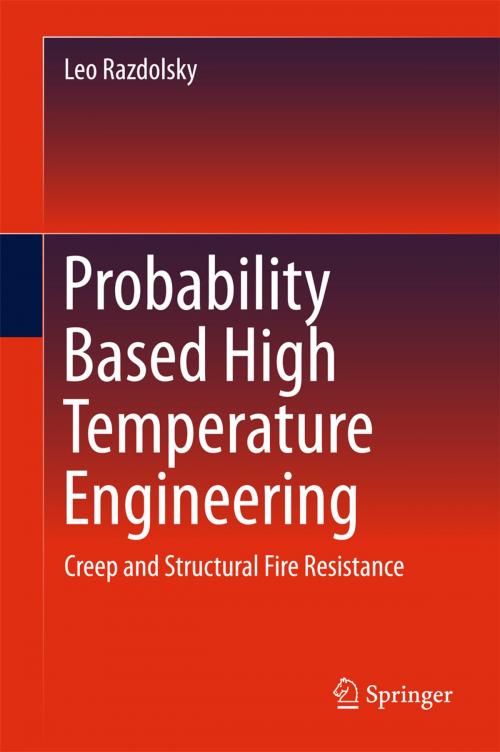Probability Based High Temperature Engineering
Creep and Structural Fire Resistance
Nonfiction, Science & Nature, Science, Physics, Mechanics, Technology, Construction & Construction Trades| Author: | Leo Razdolsky | ISBN: | 9783319419091 |
| Publisher: | Springer International Publishing | Publication: | August 18, 2016 |
| Imprint: | Springer | Language: | English |
| Author: | Leo Razdolsky |
| ISBN: | 9783319419091 |
| Publisher: | Springer International Publishing |
| Publication: | August 18, 2016 |
| Imprint: | Springer |
| Language: | English |
This volume on structural fire resistance is for aerospace, structural, and fire prevention engineers; architects, and educators. It bridges the gap between prescriptive- and performance-based methods and simplifies very complex and comprehensive computer analyses to the point that the structural fire resistance and high temperature creep deformations will have a simple, approximate analytical expression that can be used in structural analysis and design. The book emphasizes methods of the theory of engineering creep (stress-strain diagrams) and mathematical operations quite distinct from those of solid mechanics absent high-temperature creep deformations, in particular the classical theory of elasticity and structural engineering. Dr. Razdolsky’s previous books focused on methods of computing the ultimate structural design load to the different fire scenarios. The current work is devoted to the computing of the estimated ultimate resistance of the structure taking into account the effect of high temperature creep deformations. An essential resource for aerospace structural engineers who wish to improve their understanding of structure exposed to flare up temperatures and severe fires, the book also serves as a textbook for introductory courses in fire safety in civil or structural engineering programs, vital reading for the PhD students in aerospace fire protection and structural engineering, and a case study of a number of high-profile fires (the World Trade Center, Broadgate Phase 8, One Meridian Plaza; Mandarin Towers). Probability Based High Temperature Engineering: Creep and Structural Fire Resistance successfully bridges the information gap between aerospace, structural, and engineers; building inspectors, architects, and code officials.
This volume on structural fire resistance is for aerospace, structural, and fire prevention engineers; architects, and educators. It bridges the gap between prescriptive- and performance-based methods and simplifies very complex and comprehensive computer analyses to the point that the structural fire resistance and high temperature creep deformations will have a simple, approximate analytical expression that can be used in structural analysis and design. The book emphasizes methods of the theory of engineering creep (stress-strain diagrams) and mathematical operations quite distinct from those of solid mechanics absent high-temperature creep deformations, in particular the classical theory of elasticity and structural engineering. Dr. Razdolsky’s previous books focused on methods of computing the ultimate structural design load to the different fire scenarios. The current work is devoted to the computing of the estimated ultimate resistance of the structure taking into account the effect of high temperature creep deformations. An essential resource for aerospace structural engineers who wish to improve their understanding of structure exposed to flare up temperatures and severe fires, the book also serves as a textbook for introductory courses in fire safety in civil or structural engineering programs, vital reading for the PhD students in aerospace fire protection and structural engineering, and a case study of a number of high-profile fires (the World Trade Center, Broadgate Phase 8, One Meridian Plaza; Mandarin Towers). Probability Based High Temperature Engineering: Creep and Structural Fire Resistance successfully bridges the information gap between aerospace, structural, and engineers; building inspectors, architects, and code officials.















